
How to Use 24/5v Buck: Examples, Pinouts, and Specs
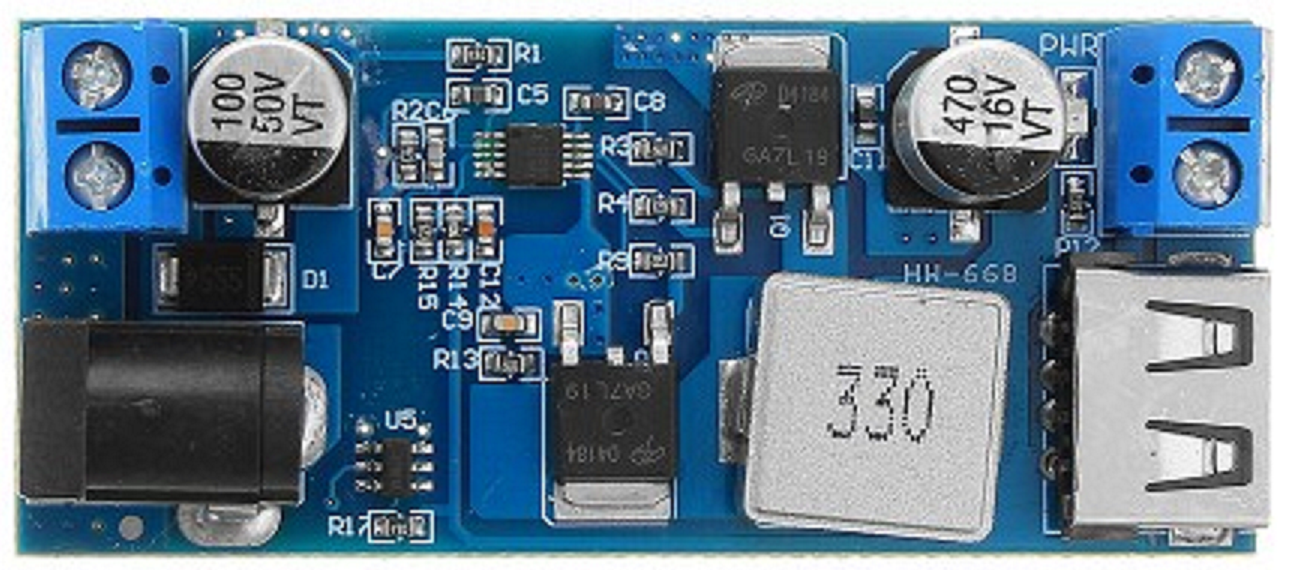
 Design with 24/5v Buck in Cirkit Designer
Design with 24/5v Buck in Cirkit DesignerIntroduction
The 24/5V Buck Converter, manufactured by Arduino (Part ID: UNO), is a DC-DC step-down voltage regulator designed to efficiently convert a 24V input to a stable 5V output. This component is ideal for powering low-voltage devices from higher-voltage sources, ensuring minimal heat generation and high efficiency. It is widely used in embedded systems, IoT devices, robotics, and other applications requiring reliable 5V power from a 24V supply.
Explore Projects Built with 24/5v Buck
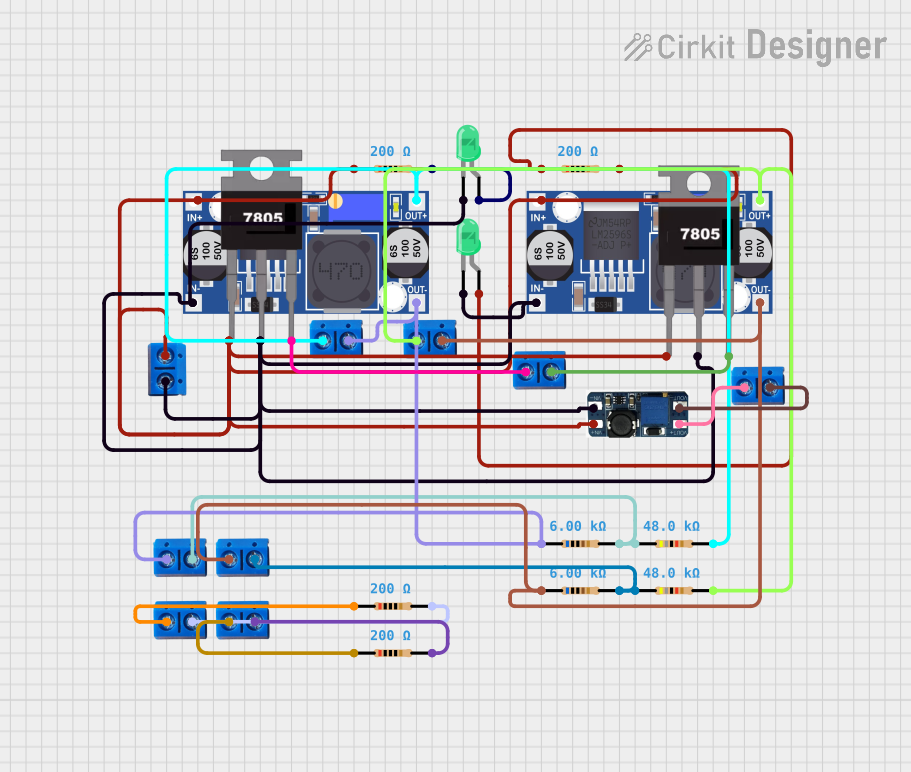
 Open Project in Cirkit Designer
Open Project in Cirkit Designer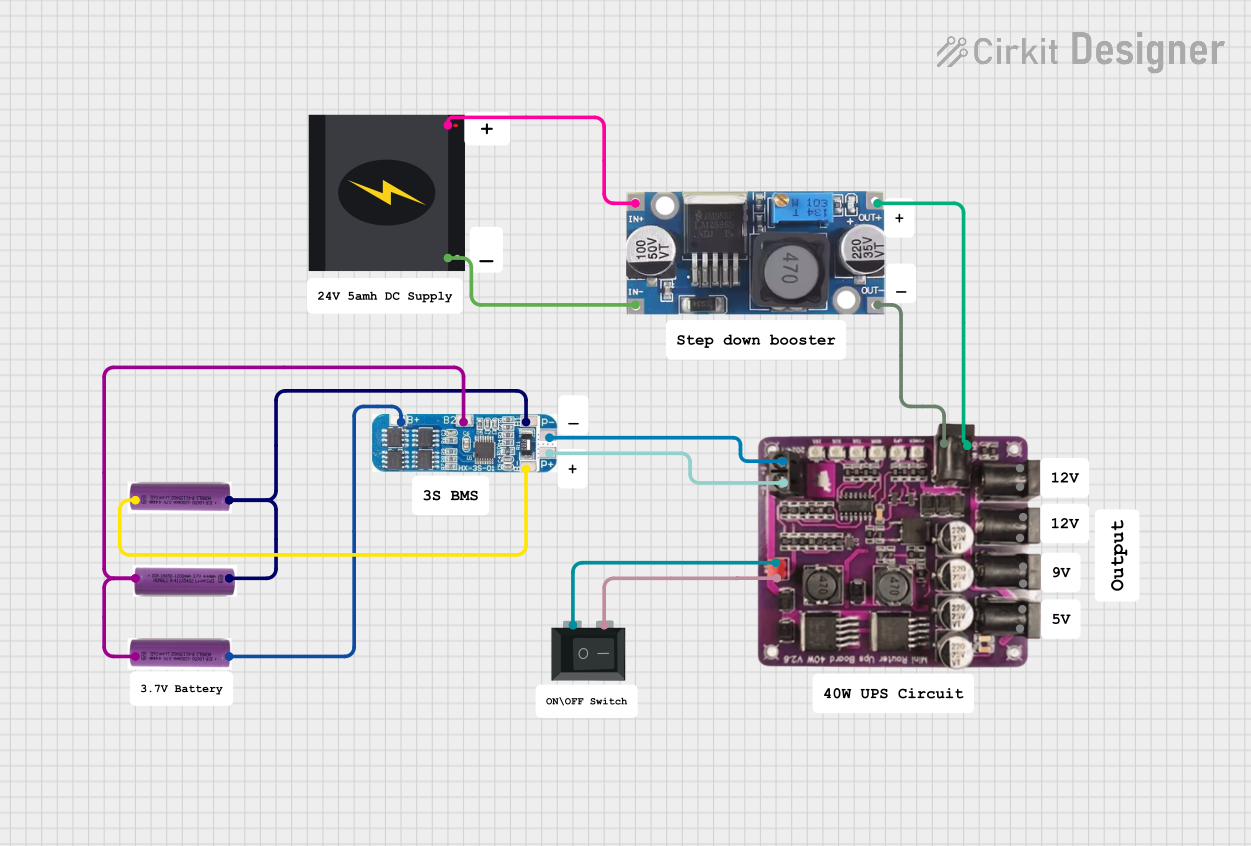
 Open Project in Cirkit Designer
Open Project in Cirkit Designer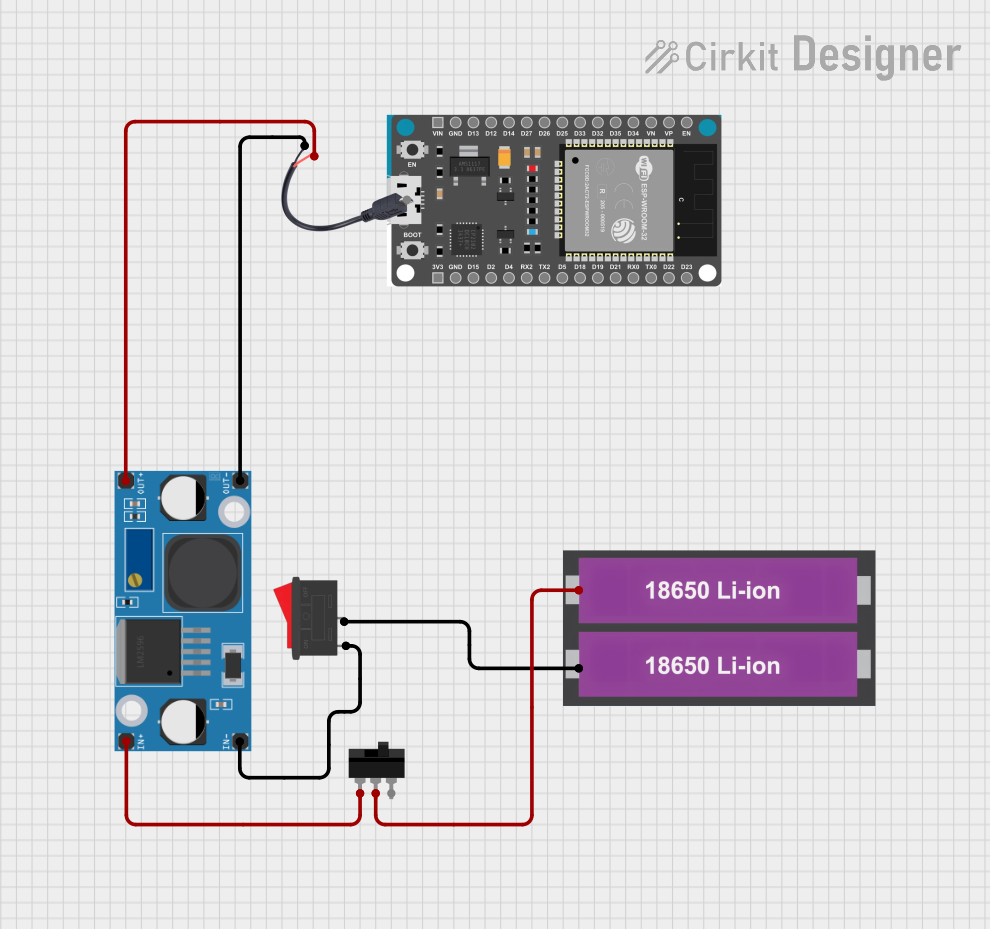
 Open Project in Cirkit Designer
Open Project in Cirkit Designer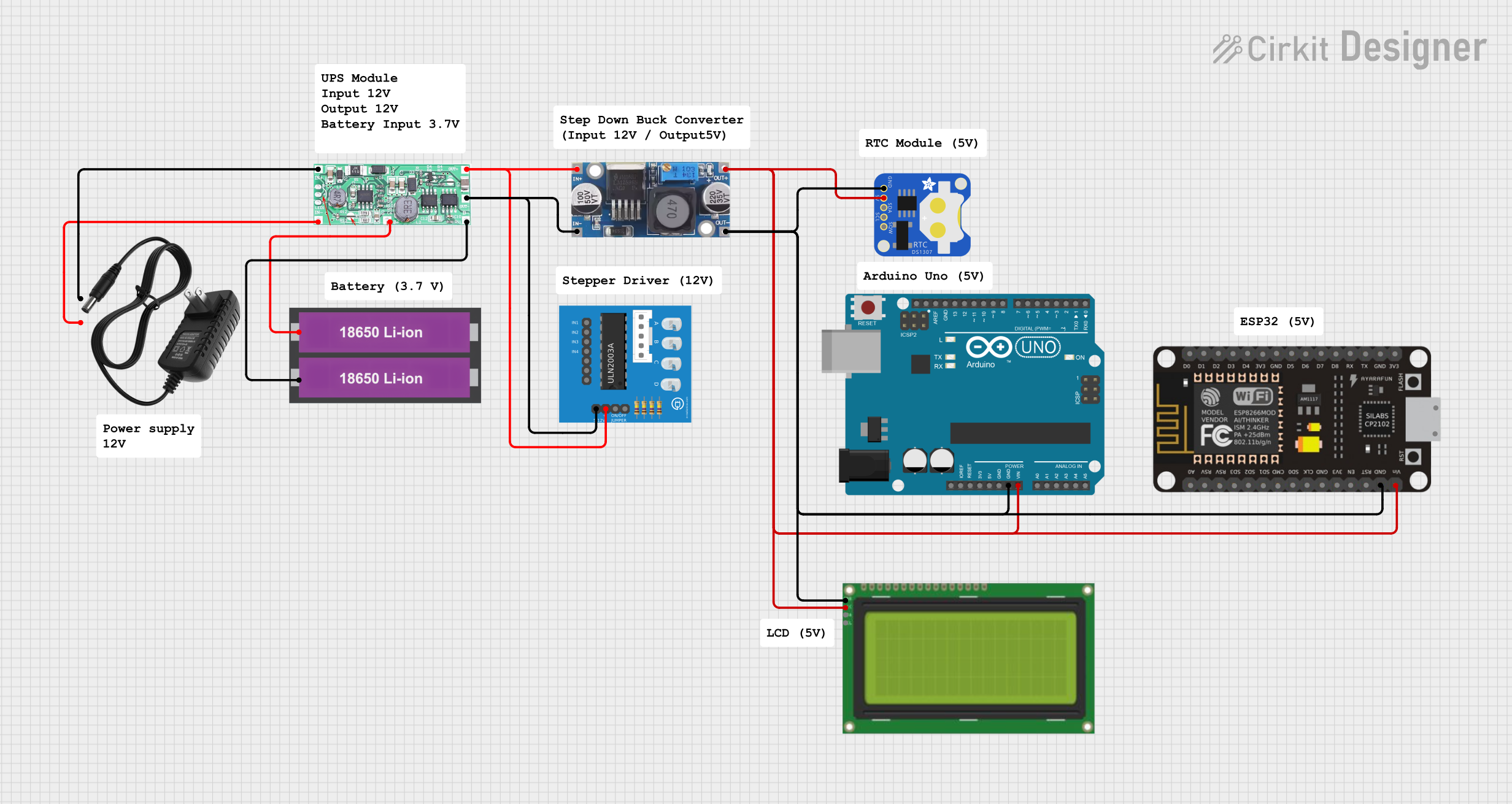
 Open Project in Cirkit Designer
Open Project in Cirkit DesignerExplore Projects Built with 24/5v Buck

 Open Project in Cirkit Designer
Open Project in Cirkit Designer
 Open Project in Cirkit Designer
Open Project in Cirkit Designer
 Open Project in Cirkit Designer
Open Project in Cirkit Designer
 Open Project in Cirkit Designer
Open Project in Cirkit DesignerCommon Applications and Use Cases
- Powering microcontrollers (e.g., Arduino boards, Raspberry Pi)
- Supplying 5V to sensors, modules, and peripherals
- Battery-powered systems requiring efficient voltage regulation
- Industrial automation and control systems
- Automotive electronics
Technical Specifications
The following table outlines the key technical details of the 24/5V Buck Converter:
| Parameter | Value |
|---|---|
| Input Voltage Range | 18V to 26V |
| Output Voltage | 5V ± 0.1V |
| Maximum Output Current | 3A |
| Efficiency | Up to 95% |
| Switching Frequency | 150 kHz |
| Operating Temperature | -40°C to +85°C |
| Dimensions | 25mm x 20mm x 10mm |
Pin Configuration and Descriptions
The 24/5V Buck Converter has the following pin configuration:
| Pin Name | Description |
|---|---|
| VIN | Input voltage pin (connect to 24V power source) |
| GND | Ground pin (common ground for input and output) |
| VOUT | Regulated 5V output pin (connect to the load device) |
Usage Instructions
How to Use the Component in a Circuit
Connect the Input Voltage:
- Attach the VIN pin to a 24V DC power source.
- Connect the GND pin to the ground of the power source.
Connect the Output Voltage:
- Attach the VOUT pin to the 5V input of your load device (e.g., microcontroller, sensor).
- Ensure the GND pin is also connected to the ground of the load device.
Verify Connections:
- Double-check all connections to avoid reverse polarity or short circuits.
- Use appropriate wire gauges to handle the current requirements.
Power On:
- Turn on the 24V power source. The buck converter will step down the voltage to 5V and supply it to the load.
Important Considerations and Best Practices
- Input Voltage Range: Ensure the input voltage is within the specified range (18V to 26V). Exceeding this range may damage the converter.
- Heat Dissipation: Although the converter is highly efficient, it may generate some heat under high loads. Ensure adequate ventilation or use a heatsink if necessary.
- Load Current: Do not exceed the maximum output current of 3A to prevent overheating or damage.
- Decoupling Capacitors: For improved stability, consider adding decoupling capacitors (e.g., 10µF and 0.1µF) near the input and output pins.
Example: Using the Buck Converter with an Arduino UNO
Below is an example of how to connect the 24/5V Buck Converter to an Arduino UNO:
Circuit Diagram
- Connect the VIN pin of the buck converter to a 24V DC power source.
- Connect the GND pin of the buck converter to the ground of the power source and the Arduino UNO.
- Connect the VOUT pin of the buck converter to the 5V pin of the Arduino UNO.
Sample Code
// Example code for Arduino UNO powered by a 24/5V Buck Converter
// This code blinks an LED connected to pin 13
void setup() {
pinMode(13, OUTPUT); // Set pin 13 as an output
}
void loop() {
digitalWrite(13, HIGH); // Turn the LED on
delay(1000); // Wait for 1 second
digitalWrite(13, LOW); // Turn the LED off
delay(1000); // Wait for 1 second
}
Troubleshooting and FAQs
Common Issues and Solutions
No Output Voltage:
- Cause: Incorrect wiring or loose connections.
- Solution: Verify all connections and ensure the input voltage is within the specified range.
Overheating:
- Cause: Exceeding the maximum output current or poor ventilation.
- Solution: Reduce the load current or improve ventilation around the converter.
Output Voltage Fluctuations:
- Cause: Insufficient decoupling or unstable input voltage.
- Solution: Add decoupling capacitors near the input and output pins. Ensure the input voltage is stable.
Device Not Powering On:
- Cause: Incorrect polarity or damaged converter.
- Solution: Check the polarity of the connections. Replace the converter if it is damaged.
FAQs
Q: Can I use this buck converter with a 12V input?
A: No, the input voltage must be within the range of 18V to 26V for proper operation.
Q: Is the output voltage adjustable?
A: No, this buck converter provides a fixed 5V output.
Q: Can I use this converter to power multiple devices?
A: Yes, as long as the total current draw does not exceed 3A.
Q: Does the converter have built-in protection features?
A: Yes, it includes overcurrent and thermal protection to prevent damage under fault conditions.